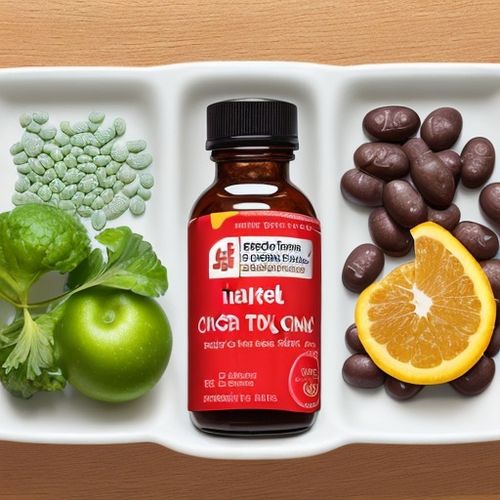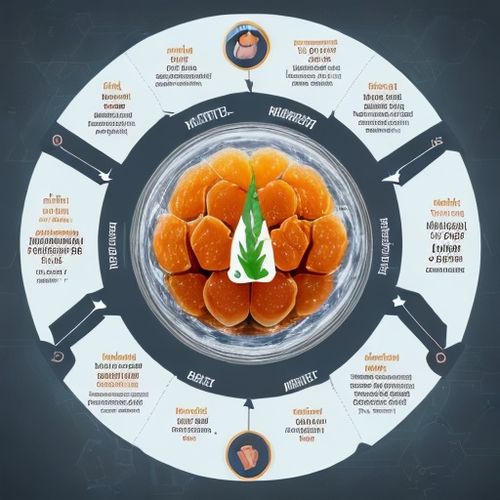The Metabolic Pathways of Food Additives: Unraveling the Journey from Plate to Cell
Food additives have become an integral part of modern food processing, enhancing flavor, texture, and shelf life. Yet, what happens to these substances once they enter the human body remains a topic of growing scientific interest. The metabolic pathways of food additives—how they are broken down, transformed, and eventually excreted—reveal a complex interplay between chemistry and biology. Understanding these pathways is crucial for assessing their safety and potential health impacts.
The digestive system serves as the first checkpoint in the metabolic journey of food additives. Upon ingestion, additives encounter the acidic environment of the stomach, where some may begin to degrade. For instance, certain artificial sweeteners, like aspartame, are broken down into their constituent amino acids—phenylalanine, aspartic acid, and methanol—before being absorbed in the small intestine. Others, such as synthetic dyes, resist gastric breakdown and pass intact into the intestines, where gut microbiota may further metabolize them. This initial phase highlights the variability in how different additives interact with digestive enzymes and stomach acid.
Absorption into the bloodstream marks the next critical phase. Water-soluble additives, like preservatives such as sodium benzoate, are readily absorbed and transported to the liver via the hepatic portal vein. Fat-soluble additives, including some emulsifiers, may hitch a ride on dietary lipids, entering the lymphatic system before reaching systemic circulation. The liver, acting as the body’s detox hub, plays a pivotal role in metabolizing these compounds. Phase I and Phase II enzymatic reactions—often involving cytochrome P450 enzymes—modify additives to make them more water-soluble for excretion. For example, the common preservative BHA (butylated hydroxyanisole) undergoes hydroxylation in the liver, transforming it into a less reactive metabolite.
The gut microbiome emerges as an unexpected player in additive metabolism. Recent studies suggest that certain artificial sweeteners, like saccharin and sucralose, may alter microbial communities in the gut, potentially influencing metabolic outcomes. Conversely, some additives, like polysorbate-80, are metabolized by gut bacteria into compounds that may affect intestinal permeability. This bidirectional relationship between additives and microbiota underscores the need for deeper research into long-term effects on gut health.
Excretion pathways vary widely among additives. Water-soluble metabolites are typically filtered by the kidneys and excreted in urine, while others may be eliminated via bile into feces. Some additives, however, leave traces behind. For instance, certain synthetic dyes can accumulate in fatty tissues due to their lipophilic nature, raising questions about chronic exposure. The efficiency of excretion also depends on individual factors like age, genetics, and overall liver function, which may explain why some people are more sensitive to certain additives than others.
Emerging concerns revolve around incomplete metabolism. While regulatory agencies generally regard food additives as safe, some compounds may form intermediate metabolites with unknown biological activity. For example, when the preservative sodium nitrite interacts with stomach acid, it can form nitrosamines—a class of potentially carcinogenic compounds. Similarly, the breakdown of some artificial colors may yield aromatic amines, which have been linked to toxicity in animal studies. These findings highlight gaps in our understanding of additive metabolism and its potential health implications.
The future of food additive research lies in advanced analytical techniques. High-resolution mass spectrometry and metabolomics are enabling scientists to track additives and their metabolites with unprecedented precision. Such tools could help identify previously overlooked metabolic byproducts and assess their biological effects. Meanwhile, computational modeling is being used to predict how novel additives might behave in the human body before they even reach the market. As the food industry continues to innovate, these technologies will be vital for ensuring consumer safety.
From digestion to excretion, the metabolic fate of food additives is a testament to the body’s remarkable ability to process foreign substances. Yet, as the complexity of these pathways becomes clearer, so too does the need for rigorous, ongoing research. Only by unraveling the full journey of these compounds can we make informed decisions about their role in our diets and their impact on human health.

By /May 21, 2025

By /May 21, 2025

By /May 21, 2025

By /May 21, 2025

By /May 21, 2025

By /May 21, 2025

By /May 21, 2025

By /May 21, 2025

By Michael Brown/May 18, 2025

By James Moore/May 18, 2025

By Thomas Roberts/May 18, 2025

By Amanda Phillips/May 18, 2025

By James Moore/May 18, 2025

By Laura Wilson/May 18, 2025

By Emily Johnson/May 18, 2025

By Joshua Howard/May 18, 2025

By David Anderson/May 18, 2025

By Sophia Lewis/May 18, 2025

By John Smith/Apr 22, 2025

By Emma Thompson/Apr 22, 2025